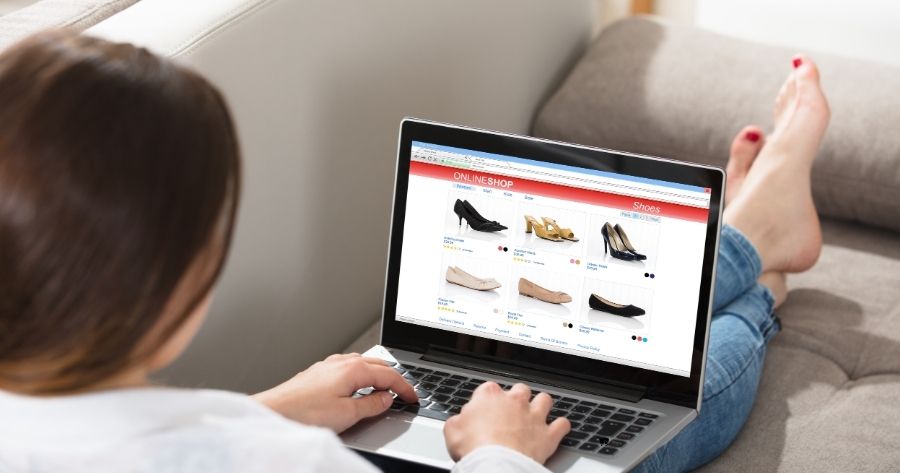
The way we buy, and sell has changed drastically over the past decade. More than ever, people prefer local online marketplaces where they can list items for free, connect with nearby buyers, and avoid hefty shipping costs. Whether you are decluttering your home, running a small business, or flipping secondhand goods, free online platforms make selling accessible to anyone with a smartphone.
Gone are the days when selling unwanted items meant organizing a yard sale or posting flyers on neighborhood walls. Currently, the internet is the largest community marketplace, connecting buyers and sellers in just a few taps.
In 2025, competition among marketplaces is fierce. New players are entering the scene while established giants like Facebook, Craigslist, and eBay continue to evolve. Sellers need to know where they can list items for free, reach local buyers quickly, and avoid hidden fees.
For small businesses, side hustlers, and everyday people, free online marketplaces are now the preferred way to sell locally. You don’t need to pay high listing fees, set up a website, or even learn e-commerce. If you can take a photo with your smartphone, you can start selling today.
But with so many platforms available, which ones are worth your time? Some marketplaces have massive reach but stiff competition. Others are small but highly targeted, giving you access to eager local buyers.
This article breaks down the best free online marketplaces in 2025, how they work, their pros and cons, and expert strategies to sell effectively. By the end, you’ll know exactly where and how to sell your local items without spending a dime.
Free Marketplaces Are Game-Changers in 2025
Before we dive into the best platforms, it’s important to understand why free marketplaces are such a big deal in 2025. Online selling is no longer reserved for big e-commerce stores or tech-savvy entrepreneurs. Today, anyone can turn their unused items into cash or start a side business without paying a single cent in fees. Here’s why these platforms have become essential:
1. Zero Listing Fees – Sell Without Financial Risk
Traditional e-commerce platforms like Amazon or Etsy usually charge sellers for each listing, plus commissions on sales. For small sellers, this can eat into profits. Free marketplaces eliminate that barrier.
- You can post 10, 20, or even 100 items without worrying about upfront costs.
- If the item doesn’t sell, you lose nothing.
- Ideal for beginners who want to test what sells best before investing in paid ads or professional platforms.
Example: Imagine you’re cleaning your garage and find old tools. On eBay, you might pay listing fees, but on Facebook Marketplace or Craigslist, you can post them all for free. Even if only one sells, it’s pure profit.
2. Local Reach – Connect with Nearby Buyers
One of the biggest advantages of free online marketplaces is their local focus. Instead of waiting weeks for a buyer across the country, you can find someone in your own city, sometimes even on your street.
- Buyers love local deals because they avoid high shipping costs.
- Sellers love it because pickup is quick and easy.
- Local marketplaces help build trust since people often prefer buying from someone nearby.
Example: If you list a bicycle on OfferUp, your listing is shown first to people within a few miles of you. That means a parent in your neighborhood looking for a bike for their child can reach out immediately, arrange pickup, and close the deal the same day.
3. Faster Sales – Items Move Quickly
Local marketplaces have a reputation for speed. Since buyers can pick up items immediately, transactions are often completed within hours or days.
- No need to package, ship, or wait for delivery.
- Urgent buyers often pay full price to secure items quickly.
- Seasonal items (like heaters in winter or lawnmowers in spring) sell extremely fast locally.
Example: You post a gently used microwave on Facebook Marketplace at 10 AM. By noon, three buyers have already messaged you. By evening, it’s gone. Compare that to listing on an online auction site, where you may wait a week for bids to close.
4. Sustainability – Support Recycling and Reuse
In 2025, consumers are more environmentally conscious than ever. Free marketplaces encourage the reuse and recycling of goods, reducing waste and promoting sustainable living.
- Old furniture gets a second life in someone else’s home.
- Clothing is resold instead of ending up in landfills.
- Electronics are refurbished and reused, reducing e-waste.
Example: Instead of throwing away your old dining table, you list it on Nextdoor. A young couple moving into their first apartment picks it up. They save money, you declutter, and the table avoids the landfill. Everyone wins.
5. Accessibility – Anyone Can Start Selling Instantly
Free marketplaces level the playing field. You don’t need technical skills, a website, or a marketing budget. If you can take a photo on your phone, you can start selling.
- Platforms are mobile-friendly, with apps designed for easy listing.
- Posting an item often takes less than 5 minutes.
- Great for students, parents, retirees, or anyone looking for extra income.
Example: A college student sells old textbooks on Facebook Marketplace. Within hours, they connect with classmates who need the books, earning cash instantly without going through bookstores or online retailers.
The Bigger Picture
When you put all these benefits together, it’s easy to see why free online marketplaces dominate in 2025:
- They lower the barrier to entry for anyone who wants to sell.
- They provide instant access to local demand.
- They support eco-friendly lifestyles.
- They make selling fast, simple, and risk-free.
Whether you’re decluttering, running a side hustle, or testing products before launching a full online store, free marketplaces give you a powerful, cost-free way to turn items into income.

Free Online Marketplaces To Sell Local Items In 2025
1. Facebook Marketplace – The Local Selling Giant
If you ask anyone where to sell something quickly in 2025, most will say: Facebook Marketplace.
How It Works
- Open Facebook, click on Marketplace, and list your item.
- Upload photos, write a description, set a price, and choose your location.
- Buyers can message you directly via Messenger.
Best for Selling
- Furniture and appliances
- Cars and motorcycles
- Clothing and accessories
- Electronics and gadgets
Why It’s the Best in 2025
Facebook’s algorithm is smarter than ever. It automatically suggests your item to buyers most likely to be interested, based on their browsing history and local activity.
Example Use Case
Imagine you’re selling a used iPhone. On Facebook Marketplace, buyers within your city searching for “iPhone 13” will see your listing in their feed. Within hours, you might get multiple offers.
Tips
- Use keywords in your title (e.g., “Samsung 55-inch Smart TV – Excellent Condition”).
- Upload 5–10 photos with good lighting.
- Always reply fast, Facebook boosts responsive sellers.
Pros & Cons
Pros
- Huge audience
- Free for local sales
- Integrated with Messenger
Cons
- High competition
- Scam messages are common
2. Craigslist – The Old but Reliable Marketplace
Craigslist may not look modern, but it still dominates local classifieds.
How It Works
- Visit Craigslist.org, choose your city, and post a free ad.
- Buyers email or call you directly.
- Meet locally for cash transactions.
Best for Selling
- Cars and motorbikes
- Appliances
- Tools and equipment
- Event tickets
Step-by-Step: Posting on Craigslist
- Select your city/region.
- Click “Create a posting.”
- Choose category (e.g., “For Sale – Furniture”).
- Add description, price, and photos.
- Publish, your ad goes live instantly.
Safety Tip
Craigslist is notorious for scams. Always meet in public places like police station parking lots.
3. OfferUp – The Mobile-Friendly Marketplace
OfferUp (which merged with Letgo) is now one of the top mobile apps for buying and selling locally.
Features
- Free local listings.
- Buyer-seller chat built into the app.
- Option to ship items (with fees).
- Seller ratings and badges.
Best For
- Everyday household items
- Kids’ toys and clothes
- Small electronics
Example
Selling a baby stroller? Post it on OfferUp and target parents in your area. Buyers can check your seller ratings, making them feel safer compared to Craigslist.
Pros
- Clean, user-friendly interface
- Safer than Craigslist (profile verification)
- Local and shipping options
Cons
- Smaller reach than Facebook
- Shipping fees
4. Nextdoor – The Neighborhood Marketplace
Nextdoor has evolved beyond neighborhood updates, it’s now a community-driven marketplace.
Features
- Listings are visible only within your neighborhood.
- Safer because members are verified.
- Perfect for bulky items and low-cost household goods.
Example
If you’re selling a lawnmower, neighbors nearby will see it. Since they’re close, pickup is easy and trust is higher.
Best For
- Garden tools
- Furniture
- Kids’ clothing
- Home goods
5. eBay Local Pickup
eBay is traditionally global, but its Local Pickup option is powerful for selling large items.
Features
- Post an item as “Local Pickup Only.”
- Get access to eBay’s massive audience while avoiding shipping.
- Secure payments via eBay.
Best For
- Collectibles
- Appliances
- Large electronics
6. VarageSale – A Virtual Yard Sale
Perfect for families, VarageSale keeps things simple and safe.
Features
- Moderated communities.
- Family-friendly platform.
- Great for household goods.
Example
Selling a baby crib? Parents in your area browsing VarageSale will find it quickly.
7. Gumtree – International Favorite
Gumtree is huge in the UK, Australia, and Canada.
Features
- Free listings in most categories.
- Big audience for cars, real estate, and household goods.
Best For
- Furniture
- Vehicles
- Rentals
8. Freecycle – For Free Local Giving
If your goal isn’t money but decluttering, Freecycle is a perfect choice.
- Everything is free.
- Perfect for bulky items people don’t want to sell (old sofas, broken appliances).
- Eco-friendly community.
9. Facebook Buy/Sell Groups
Beyond Marketplace, local Facebook groups are hidden gems.
- Many groups focus on specific categories (baby gear, cars, electronics).
- Posting is free.
- Audience is very targeted.
10. Regional Marketplaces
- OLX – Big in Asia, Africa, Latin America.
- Jiji – Dominant in Africa (especially Nigeria).
- Kijiji – Canada’s largest local marketplace.
These platforms are better than Facebook in some regions.
Advanced Tips to Sell Faster in 2025
- Use AI-powered photo enhancers to make your images stand out.
- Bundle items (e.g., sell dining chairs in a set).
- Use urgency words (“Available Today Only”).
- Refresh listings every few days.
- Cross-list items across multiple marketplaces.
Safety First: Rules for 2025
- Meet in public, well-lit areas.
- Accept cash or trusted payment apps.
- Never share personal addresses.
- Report scam attempts immediately.
Frequently Asked Questions
What’s the fastest way to sell an item locally?
Facebook Marketplace, thanks to its massive audience.
Which marketplace is safest?
Nextdoor and VarageSale, due to verified profiles.
Can I sell cars on free marketplaces?
Yes, Craigslist, Facebook Marketplace, and Gumtree are the best options.
Do I need to pay any fees?
No, unless you use premium features or shipping options.
Conclusion
In 2025, selling local items for free is easier than ever. Whether you choose Facebook Marketplace for reach, Nextdoor for safety, Craigslist for simplicity, or regional apps like Jiji and OLX, you can turn clutter into cash within hours.
The secret is simple: use multiple platforms, write strong listings, and stay safe. With the right strategy, your old items could be someone else’s treasure, sold faster than you think.
Whether you’re decluttering, flipping items for profit, or running a small business, these free platforms give you the tools to sell faster, safer, and smarter, all without spending a dime.





